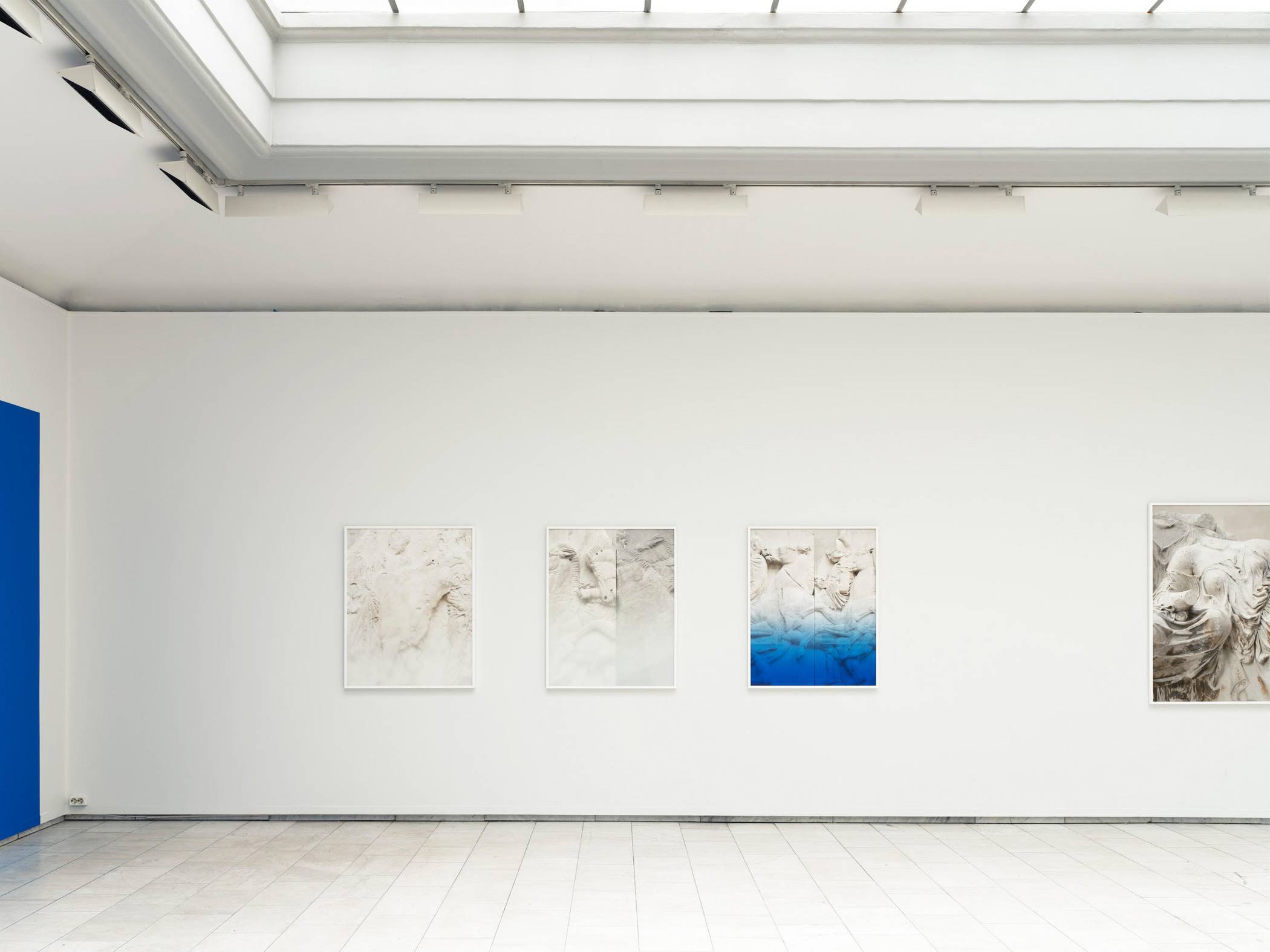Espen Gleditsch
mmmMarbles
The Skylight Room
15.09. – 16.10.2022
The focal point of mmmMarbles, Espen Gleditsch's exhibition of photographs in the Overlyssalen, is the Parthenon’s one-hundred-and-sixty-metre-long marble frieze, created for the temple in Athens nearly two thousand five hundred years ago. The ruins of the temple and the white marble frieze have been a recurring source of inspiration for epoch-making tendencies in Western art and cultural history. It is also subject to problematic interpretations, with one recurring misconception, dating back to the sixteenth century and the Renaissance, being that ancient sculpture and architecture were originally executed in pure, white, unpainted marble.
The Parthenon sculptures, also known as the Elgin Marbles, are caught up in an over two-hundred-year-old political cobweb; large parts of the frieze were in the early nineteenth century transported from Athens to London by the 7th Earl of Elgin and sold to the British state. Since then, the legitimacy of the exportation has been the subject of ongoing debate, both outside and within the United Kingdom’s borders. Demands for repatriation of the collection of sculptures to Athens have become an ever-evolving and inflamed political issue in Greece-United Kingdom relations.
The Parthenon sculptures bear the marks of more than two thousand years of external conditions, the results of which have been profound: from war, weathering, and looting in Athens to salt damage during the crossing to England and extensive patina from London's coal-polluted air, not to mention the controversial and destructive restoration at the British Museum in the 1930s, led by the private benefactor and art dealer Joseph Duveen, which caused extensive and permanent damage to the surfaces of the sculptures. The intention was to make the patinated marble conform more closely to the mistaken ideal of ancient sculpture as pearly white.
In the project mmmMarbles, Espen Gleditsch photographed a specific group of works from the British Museum with a very specific provenance. He directs the focus towards a historical and a political reality by depicting the material historicity of the Parthenon frieze. His interest in how narratives about historical and contemporary events are established, conveyed, and legitimised, as well as his interest in classical sculpture, modernist architecture, museum spaces, and, not least, in colours and surfaces, come together in the exhibition in which the extremely precise representation of the stone evokes both historical conditions and conceptual abstraction.
Espen Gleditsch (b. 1983) lives and works in Oslo. He received a master’s degree from the Academy of Fine Art, Oslo National Academy of the Arts, also studying at the Academy of Performing Arts Prague. He has participated in numerous exhibitions, most recently including at Henie Onstad Art Centre; Sørlandets Kunstmuseum; Podium, Oslo; Bergen Kunsthall NO.5; Kunstnernes Hus; NoPlace, Oslo; and FRAMA, Copenhagen. Gleditsch’s work is represented in a number of private and public collections, including the collections of Henie Onstad Art Centre, Preus Museum, KORO, and Haugar Kunstmuseum.






